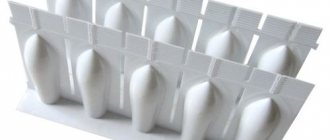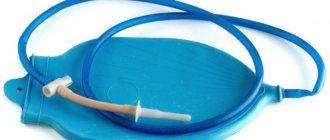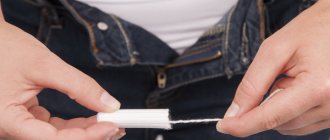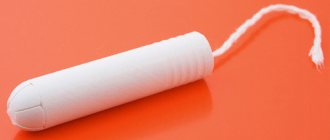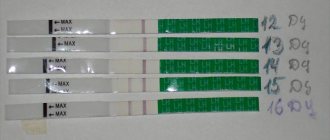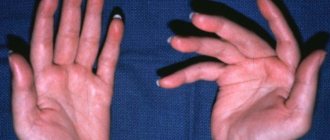What is a menstrual cup
The first breakthrough in feminine hygiene products was pads. And when pads appeared that could be glued to underwear, the happiness of the girls knew no bounds - it became possible to move quickly at any time of the month. But, as gynecologists established, the pads had to be changed after each visit to the toilet. Few people followed hygiene during menstruation according to all the rules, but, nevertheless, monthly expenses were inevitable.
Time passed, medicine studied physiology more and more, and, by the end of the 20th century, tampons appeared on mass sale in Russia. These little cotton “fingers” caused horror among the older generation and indescribable delight among the youth. Despite this, it turned out that tampons not only absorb bloody discharge, but also dry out the natural mucous environment. This causes a huge number of gynecological diseases. Therefore, it was recommended to use tampons only in the most necessary cases, for no more than 3 to 4 hours a day.
Both types of hygiene products are quite expensive. Usually, fathers of several daughters, when asked how they are doing, answer that they work for sanitary pads. Other owners of the “harem” agree with them sympathetically and understandingly.
This would have continued, but the manufacturer did the impossible - he created a reusable feminine hygiene product.
Although glasses appeared in the 30s of the last century, they became popular in Russia relatively recently. Malysheva, in her program, called the menstrual cup a breakthrough in feminine hygiene. But, basically, doctors do not express categorical opinions - they wait for the results of mass use for several years. Only by looking at user reviews can you check how harmless this device is. So far we have heard nothing but good things about the menstrual cup.
Photo 1
What it is?
A menstrual cup, also called a mouthguard, is a container made in the form of a small cap. It is inserted into the vagina during the period when menstrual flow occurs.
The material for the manufacture of such a product is high-quality medical silicone, thermoplastic elastomer or latex. A menstrual cup can also be disposable. In this case, it is made from a certain type of polyethylene.
What is a menstrual cup for? Its main task is not to absorb menstrual fluid, as female tampons or pads do, but to collect it in its hollow container.
Contraindications
Basically, all women will feel comfortable with this type of hygiene. But there are contraindications and restrictions on use. If in doubt, you can always contact your gynecologist.
| Not recommended for use | Causes |
| For virgins | The mouth guard is not suitable for those with a hymen because it must be inserted up to the cervix. |
| For gynecological infectious diseases, various inflammations | Blood contaminated with microorganisms accumulates in the flask, where, instead of being removed naturally, it happily multiplies in a warm, damp environment, in pitch darkness - what microbes love |
| During the postpartum period | At this time, the uterus contracts and is cleansed of the remains of the baby's place and placenta. Apart from sterile diapers and large pads, no other hygiene products are used. |
| During sexual intercourse | A foreign object in the vagina can, of course, injure the cervix |
| At night, while sleeping | In a dream, a person does not lie in one position and is in a horizontal position. The liquid, in this case, according to the law of physics, flows out. In addition, the cup fits tightly to the cervix - it will interfere with natural blood circulation in the tissues. Doctors believe that the flow of blood into the uterus during sleep can also provoke endometriosis. In a word, remove the menstrual cup at night and put on your usual pads - the body should rest |
| For heavy bleeding during menstruation | Especially in women with fibroids, there is discharge in the form of rags and blood clots. For a woman with such periods, it is better not to use anything other than pads. If the amount of blood released, according to the woman’s physiology, is moderately abundant, you can choose a larger cup and change it 2-3 times a day. For example, when a healthy girl’s period lasts only 3 days, but it’s very heavy. |
| Allergy (no cases identified) | Individual intolerance to any component from which the silicone bowl is made, including dyes. Rubber analogues cause allergies in sensitive individuals. For example, a product from Keeper |
| Contraindication – common to all | Never use a menstrual cup if you know for sure that at the right time you will have nowhere to take a hygienic shower, wash and sterilize the mouth guard. |
A menstrual cup is a personal hygiene product, just like pads and tampons. It does not protect against pregnancy. Does not prevent sexually transmitted infections. You don’t expect such an effect from pads, do you?
https://youtu.be/9zNMWzxgYYY
Advantages and disadvantages
Reviews among women who have ever used silicone caps are mostly positive. Among the main advantages of using the product are the following:
- The thickets do not disturb the natural environment of the vagina, do not dry it out and cannot cause injury, i.e. no harm;
- they do not increase the risk of developing gynecological diseases (for example, fungal infections);
- are not a breeding ground for the growth of bacteria, as is the case with feminine pads and tampons;
- completely hygienic and do not leak even during active physical activity;
- Due to the tightness, there is no unpleasant odor during use;
- it is rarely necessary to clear liquids during the day, since they are quite spacious, and prolonged wearing does not cause toxic shock;
- saving money when purchasing a reusable model;
- the possibility of allergies and skin irritation is completely excluded;
- environmentally friendly material that does not pollute the environment.
Some women listed the following as disadvantages:
- it takes time to choose a convenient size and volume for yourself;
- skills are required in the processes of inserting and removing a menstrual cup, mouthguard;
- the vacuum effect can cause severe discomfort for some;
- The use of this product is not recommended for virgins, as it can cause stretching of the hymen.
Based on the above properties of the menstrual cup, you can decide whether or not to try such a new hygiene product. If you decide to do this, you need to familiarize yourself with some recommendations for introduction, removal and cleaning.
Types of bowls. How to choose the right menstrual cup
There are a huge number of offers on the market. Silicone glass can be of different colors and sizes.
You need to choose based on several parameters:
- Size.
- Elasticity/softness of silicone.
- Ponytail length – short/long.
- Dimensional divisions – yes/no.
- Color. Transparent ones do not contain dyes. Colored ones are also harmless.
- Environmentally friendly - silicone/rubber (preferably silicone).
- Manufacturer. The choice depends on your own desire.
- Price does not depend on quality (mostly).
Each bowl is sold in a special beautiful breathable storage bag. The fabric is different - from cotton to organza.
For 2020 in Russia, there are mainly two sizes on wide sale - S, L.
The German manufacturer produces the largest range of sizes from S to XXL. In European pharmacies you can find 4 sizes. (photo 2). The Italians claim that their products are made from the most environmentally friendly silicone, which is why they produce unpainted transparent bowls.
Some kits include not only a storage bag, but also a sterilizer or a special cup for sterilization and instructions for use.
Photo 2
How to decide on the size. Ladies who have given birth and those who have not given birth can choose the most suitable “style” of glass according to their feelings. Everything is very individual. Conventionally, girls who have not given birth use a model in size S. Those who have given birth use L. But until you try, you cannot determine for sure. You can ask your gynecologist which mirror he uses to look at you, and use this size as a guide.
The table contains a number of indicators that will help you make your choice:
| Features of the menstrual cup model | |
| Cup height | The larger the glass, the more it will hold. If you have heavy discharge but have not given birth yet, choose a longer flask. |
| Diameter | |
| Ponytail length | The tail is attached to the bowl for a reason. Thanks to him, it is easy to pick up the glass, press it to the vagina and pull it down with one finger. Choose which one you like best. |
| Manufacturer's stated size | If the size is smaller than necessary, the bowl will fill prematurely. More elastic silicone glasses open better, but the level of vaginal resistance will be higher. The soft silicone inside does not always unfold quickly and completely, but it is more gentle. Although both levels of elasticity do not cause any sensation. |
| Firmness level | |
| Availability of dimensional divisions | Convenient when a woman wants to know how much blood she is losing |
| Color, design | A purely individual decision - you can choose whatever pleases your soul |
| Features of body structure | |
| Vagina length | Short/long. Your gynecologist can advise on this issue. Important when choosing a long menstrual cup |
| Bend of the cervix | In this case, it is important to find out the opinion of your doctor (bending angle and everything else) |
You can buy two sizes at once and try both. You’ll know right away which one is suitable – it won’t leak.
Choosing a manufacturer is a purely personal decision. Because there is not much difference in the composition of silicone. Doctors did not note any complaints - each girl chooses what she likes in terms of design, price, elasticity.
Among the manufacturers in Russia often appear:
- Aneercare;
- Wonderzine;
- Aneer;
- Natu;
- Yuuki;
- Fun cup;
- Meluna;
- other brands.
Each company offers its own line of sizes and shapes. The color of the bowl does not play any role in functionality. It’s just nice to have not only a necessary, but also a beautiful thing.
Product selection
Today, several manufacturers produce menstrual cups. Reviews from women indicate that each of their products is slightly different in size. But in general, all menstrual cups are divided into two groups. The first of them includes products whose size is designated as S. It also corresponds to the markings “1” or “A”. The second group of products has size L, which also corresponds to “2” or “B”.
As a rule, the first (small) type of cups is intended for women aged 25 to 30 who have not yet become pregnant. Products with large sizes are intended for those ladies who have already given birth or have crossed the threshold of their thirties.
As a rule, these two groups are enough for each woman to choose the most comfortable product for herself. But what else needs to be considered when choosing menstrual cups? Feedback from women confirms that determining the right size of a product is a very individual matter. For example, the first group is recommended for those who have not yet given birth, have a fragile constitution and not very heavy discharge during menstrual periods. The second type of menstrual cups should be chosen by women who have already given birth, as well as those who have undergone surgical interventions on the genitals (including curettage and abortions). Size L is also intended for those ladies who have a large build or heavy menstruation. But sometimes even a woman who has given birth, but at the same time a miniature one, chooses the first type of cup for herself.
When choosing a mouthguard, you will also need to measure the height of your vagina. This can be done independently, but it is better if the woman seeks advice from a gynecologist.
How to choose a menstrual cup so that it is as comfortable as possible when using it? The size of the product is determined by its length and diameter. To determine the parameters of the mouthguard, it is also necessary to clarify whether the cervix is located high or low in the body. So, for women who can touch it with their finger, short cups are usually suitable. But all this, again, is very individual.
The appropriate menstrual cup size is most often selected by trying several options from different manufacturers. These companies adhere to the following standards:
- the Czech company LadyCup offers large bowls with a diameter of 46 mm and a length of 53 mm, and small ones, respectively, 40 and 46 mm;
- the Czech company Mooncup produces large products with a diameter of 46 mm, the length of which is 50 mm, and small ones, respectively, 43 and 50 mm;
- Czech manufacturer Yuuki produces large products with a diameter of 47 mm and a length of 57 mm, and small ones with 42 and 48 mm;
- The Finnish company Lunette offers large bowls with a diameter of 46 mm and a length of 52 mm, and small bowls with a diameter of 41 and 47 mm, respectively.
The choice of bowl is also made taking into account such an indicator as its softness. Products made from hard material are suitable for those women who have strong vaginal muscles, or those who have not yet given birth.
Menstrual cups are available with a variety of tails. These devices can be flat or tubular, in the form of a ring or a ball. And sometimes there are no “tails” in products at all.
Bowls designed to collect secretions on menstrual periods are offered by manufacturers in different colors. They can not only be transparent or white, but also have a huge range of different shades. What color should a woman choose? This will depend on her personal preferences. But it is worth keeping in mind that colored products will retain their aesthetic appearance for a longer period. But, on the other hand, this is bad, since it will be difficult to visually determine their purity.
How to use a menstrual cup
Like any reusable personal hygiene item, a menstrual cup requires not complicated, but special treatment.
Hygiene.
How to use:
- Wash your hands with soap.
- Rinse your menstrual cup.
- Sterilize.
- Roll the glass as in photo 3 or 4.
- Insert into the vaginal cavity up to the cervix in a lying position (the most comfortable position) or standing (put one leg on the ground).
To remove the flask, you need to be in a place where there is a toilet, running water, and a hygienic shower (bidet, jug of water). If it is possible to sterilize a tulip, then in general it will be very good. But you can get by with a simple rinse.
Photo 3
If the cup does not open completely inside you, then try folding it a little differently - as shown in photo 4
Photo 4
How to remove:
- Wash your hands with soap.
- Place one foot on the step.
- Insert your finger into the vagina along the tail of the glass.
- Just above the tail, press the glass against the vaginal wall and gently pull down.
- Pour the contents of the bowl into the toilet.
- Rinse the flask.
- Wash yourself.
- Insert the cup back.
After the end of menstruation:
- After you take out your silicone cup on the last day of your period, be sure to rinse it thoroughly.
- Sterilize.
- Dry with a soft cloth.
- Place in a special bag.
- Store until next month, wherever it is convenient - even in a lady's handbag.
Product introduction
Instructions for use must be included with the menstrual cup. However, a woman will need a little practice in order to begin inserting the mouthguard on her own without any problems. In general, such manipulation will not cause any difficulties after 2-4 cycles.
Like a tampon, the cup is inserted directly by hand. You can first study this procedure according to the instructions, and also get acquainted with it through video tutorials. By following all the recommendations, you can significantly speed up the process and make your work easier.
How to insert a menstrual cup? First of all, you need to wash your hands thoroughly using soap. This will prevent infection from entering the body. Afterwards you will need to decide on a pose. It is most convenient to administer this remedy while lying down or standing, raising one leg on some surface, as well as sitting on the toilet or squatting. That is, how will anyone feel more comfortable? It should be remembered that the vaginal muscles should be in a relaxed state. This will make inserting the menstrual cup much easier.
At the next stage of the procedure, the product is moistened with water or treated with a water-based lubricant. Next, the mouth guard is folded in half. This will make it easier to insert it into the vagina.
After this, it is necessary to spread the labia with your left hand, and with your right hand, push the cup so that the tip of its tail is at a depth of 1 to 2 cm. If the product is inserted deeper, then some leakage is likely.
Next, the menstrual cup must be positioned correctly in the woman’s body. In order for this to happen and the product to take the required position, it must be rotated around its axis by the base. In this case, the material of the mouth guard, which softens slightly after entering the body, adheres tightly to the vaginal walls, preventing fluid from leaking out.
If the mouthguard is positioned correctly, a woman will not feel it when moving or changing position.
Sterilization
There are 3 ways to sterilize a menstrual cup:
- In the usual way. Boil in a saucepan of water for 5 minutes.
- In a special glass with a lid - in the microwave for 1 minute.
- In a special electric sterilizer, as written in the instructions from the manufacturer of the electrical appliance.
- In the microwave, of course, it’s faster and more convenient, but the choice is always yours.
Important! It should only be stored dry.
The whole process, from hand washing to sterilization, looks like in photo 5.
Photo 5
How to use a menstrual guard?
All bowls come with detailed operating instructions. However, depending on the characteristics of each organism, the time it takes to get used to a hygiene product may vary. For most women it ranges from 2 to 4 cycles.
Preparation and how to insert correctly
The insertion procedure itself is difficult in the first period, but over time the process of folding and installation becomes commonplace.
Preparation and the procedure itself are carried out as follows:
- You must wash your hands thoroughly.
- Treat the product with a special water-based lubricant.
- In order for the mouthguard to open correctly inside, it is folded in half.
- For convenience, you need to find the correct body position in which the process will not be difficult. Many people do this on the toilet or in a squatting position. The main thing is to ensure that the pelvic muscles relax as much as possible, and then the cup will simply slip inside.
- Use your fingers to spread your lips and insert the mouthguard into the vagina approximately 1-2 cm deep. Do not do this too deep, otherwise leakage may occur.
- After the installation is completed, you need to check how the bowl stands. To do this, you need to rotate it around its axis. If it works, then everything was done correctly.
How to remove the cap?
The tray is removed quite simply. To do this, wash your hands and destroy the integrity of the vacuum layer by simply pressing on the base of the bowl. After this, you can pull the product out by the tail. At the end, the tray is cleared of its contents, washed and reinserted.
Disinfecting solutions or tablets are produced specifically for cleaning such products. After the end of the cycle, the bowl should be boiled for 5 minutes in a separate pan and stored in a breathable bag.
It is best when the mouthguard is made of reliable medical silicone. In this case, there is no need to fear that its use will cause an allergic reaction. Such products can be boiled or treated with other disinfectants. If the mouth guard is leaking, you need to understand why this is happening.
Maybe:
- it is simply full and you need to delete the contents and insert it again after pre-processing;
- sometimes a woman has a special structure of the vagina and the angle of its inclination in relation to the uterus is too sharp, so a little liquid seeps through the sides, and the surface of the cup cannot absorb it;
- the likelihood of leakage increases if the vagina is wide and the walls are not very strong, or the product is chosen incorrectly;
- in some cases, blood remains on the walls of the vagina without having time to drain into the cup, and after a new insertion it can leak out from below.
During sex, the presence of the cup is not felt. The only thing you should be afraid of is a long, stiff tail that can break the condom. At the same time, the cup itself does not protect against sperm in any way and therefore cannot be considered a means of contraception.
Useful tips
A menstrual cup that will be used for the first time requires boiling in water for several minutes. Such sterilization will ensure the safety of the procedure, while the bowl must be completely immersed in water. You can also use ready-made compounds that, after a short treatment, completely kill bacteria and spores of harmful diseases.
The method of administration for inexperienced users is as follows:
- You should wash your hands and treat them with gel.
- Fold the mouth guard into a C shape, rolling it several times and squeezing it tightly at the edges: this way it is easier to insert.
- If the product is inserted correctly inside, it will open on its own. A sign that everything is done perfectly is the absence of folds on the bottom and walls.
It is important to learn to relax during insertion and find a comfortable position. You can exercise before your period arrives. For women with experience, the cup can be folded into a seven.
For this:
- With washed hands, squeeze the top edge and lower one side, pressing the edges of the product firmly.
- Fold the edges again and carefully insert the product until a small click is heard inside, indicating that the bowl has fully opened.
Pros and cons of menstrual cup
Categorically rejecting the usual tampons and pads is wrong. Therefore, compare according to the table and determine for yourself when to use the benefits of one type of personal hygiene and abandon another.
| Options | Menstrual cup | Tampons | Gaskets |
| Price | Once every 5 years you can buy it in a wide price range from 32 rubles on AliExpress to several thousand from a resonant pharmaceutical brand that claims that its silicone is the most environmentally friendly in the world. | From 60 to 300 rub. per pack. It’s rare that one pack is enough for a woman to get her period. | |
| Sterility | Completely depends on your actions. Sterilization takes 1 minute | There are no guarantees of sterility | |
| Reliability | Does not leak within 6 – 12 hours if the cup is correctly selected and inserted into the cavity according to the instructions | Unreliable. They can let you down at the most inopportune moment. | |
| Harm to health | Not found | Often. Dry the mucous membrane, cause erosion and other diseases of the vagina and cervix | Rarely. They spread infection. Especially if personal hygiene rules are not followed during menstruation |
| How often to change per day, depending on individual characteristics | Every 12 hours | Every 2 – 3 hours | Every time you go to the toilet |
Most women make extensive use of all menstrual hygiene options. It all depends on the circumstances. Therefore, all the pros and cons are very conditional.
Read
Also:
- How to choose pads for a teenage girl?
- How to choose and wear pads correctly?
- Breast pads for breastfeeding
- TOP 7: Choosing pads for armpits against sweat, reviews. Instructions on how to make it yourself
Review of the best menstrual caps
MeLuna
Country of origin: Germany. The material is a safe elasto-thermoplastic used for the manufacture of children's silicone products.
Bowls called Soft are made very soft for increased comfort; Classic is made of medium softness, and Sport is more elastic, for lovers of power loads and sports games. Cost: 1290 rubles.
The model is presented in four size categories (S, M, L, XL), and has differences in height.
meluna cup
The most popular:
Soft Stem Shorty M: diameter - about 4 cm, length - 3.8 cm; holds liquid up to 12 milliliters in volume. Small and short, ideal for scanty discharge, suitable for young girls and women before childbirth, super soft.
Classic Ball M: diameter - about 4 cm, length - 4.8 cm; Capacity for 20 ml of liquid. Recommended for girls and those who have not given birth, medium softness.
Classic Stem L: diameter - 4.4 cm, length slightly more than 5 cm; very spacious 24 ml. Designed for women over thirty years of age and those who have already given birth.
Soft Ball Shorty XL: diameter - 4.7 cm, length - 4.4 cm; holds liquid up to 20 ml. The model is suitable for any adult woman even after the birth of a child. Very soft.
Classic Stem Shorty L: diameter - 4.4 cm, length - 4.1 cm; minimum volume - 15 ml. The product is recommended for use by those who have given birth and any woman over 25 years of age.
Advantages:
- reusable;
- used for light discharge;
- shortened, suitable for those with a low neck;
- medium elasticity.
Flaws:
- you need to choose the right size, softness and elasticity;
- the price is higher than budget.
Yukki
The country of origin is the Czech Republic together with the USA. Material: medical silicone. The model is popular. Available in two sizes (S or L) and three softness options. Kits include two bowls, or one tray comes with additional items, such as a wash container. Distinctive features of the model from products from other manufacturers: due to sufficient elasticity and easy opening, the skills of use are easily acquired, and reliable protection is provided for an active lifestyle. Cost: 1550 rubles.
The most popular:
Classic 1: width - 4.2 cm, length - 4.8 cm, capacity - 15 ml. Made for girls under 24 years old and those who have not yet given birth.
Soft 2: width - 4.7 cm, length - 5.7 cm; capacity - more than 30 ml. Intended for use after childbirth and for those who are over 30 years old.
Yukki Cup
Advantages:
- high elasticity;
- good length;
- large capacity;
- convenient for high anatomical location of the neck;
- super soft.
Disadvantages of models:
- only two sizes;
- the price is higher than budget.
OrganiCup
Country of origin: Denmark. Material: medical silicone. Sold with a cotton bag in two size categories. Available in colors: white, transparent. Cost: 2090 rubles.
Popular models:
- OrganiCup A: diameter - 4 cm, capacity - 25 ml. Suitable for those who have not given birth and girls under 25 years old.
- OrganiCup B: diameter - 4.5 cm, capacity - 30 ml. Intended for use by adult women.
OrganiCup
Advantages:
- comfortable use;
- for scanty and light discharge;
- perfect softness;
- good elasticity.
Flaws:
- minimal choice of sizes;
- high price.
CupLee
Country of origin: Russia. Material: medical silicone. Available in two sizes: L and S. Color range: for every taste. Cost: 950 rubles.
Popular models:
- CupLee S: 4 cm wide, 4.7 cm long, capacity holds up to 20 ml of liquid. Intended for young people and those who have not yet given birth;
- CupLee L: 4.4 cm wide, 5.3 cm long, capacity up to 30 ml. Recommended for adult females and mothers.
CupLee
Advantages:
- comfortable to wear;
- soft material;
- roomy;
- holds its shape well;
- easy to open;
- affordable price.
Flaws:
- With a variety of colors there are only two sizes.
LilaCup
Country of origin: Russia. Made from high quality silicone. A storage pouch is included. Cost: 850 rubles.
Popular models:
LilaCup S: width - 4 cm, length - 5 cm, capacity - 22 ml. For young people under 25 years of age and those who have not given birth;
2)
LilaCup L: width - 4.5 cm, length - 5.5 cm, capacity - 28 ml. Ideal for use by adults and mothers.
LilaCup
Advantages:
- convenient length;
- the shape contributes to its rapid opening;
- holds secretions well;
- comfortable, soft;
- affordable price.
Flaws:
- only two sizes.
Tulip
Country of origin: Russia. Material: silicone. The advantage is the ability to choose the appropriate size, smoothness, ease of washing, and a convenient tail for removal. Cost: 800 rubles.
Popular models:
- Tulip S: diameter - 4.2 cm, length - 4.8 cm; capacity - 24 ml. Made for young girls under 28 years of age and those who have not given birth.
- Tulip L: diameter - 4.6 cm, length - 5.4 cm; capacity - about 29 ml. Intended for women over 28 years of age who gave birth vaginally.
Tulip menstrual cup
Advantages:
- good capacity;
- comfortable,
- quite elastic;
- nice price.
- for light discharge;
- perfect elasticity.
MermaidCup
Country of origin: Malaysia. Made from medical grade silicone. Cost: 1290 rubles.
Popular models:
MermaidCup 1: 4.2 cm wide, 5.2 cm long; capacity 16 ml. Suitable for girls and those who have not given birth.
MermaidCup 2: 4.6 cm wide, 5.6 cm long; capacity 20 ml. Designed for mothers and women over 30 years old
MermaidCup
Advantages:
- long;
- for discharge of medium abundance;
- super soft.
Flaws:
- the price is higher than budget.
LadyCup
Country of origin: Czech Republic. Made from medical silicone. In demand among women with different anatomical features. Especially popular among athletes and extreme hobbies. Supports natural microenvironment. Cost: 1650 rubles.
Popular models:
- LadyCup S: 4 cm wide, 4.6 cm long, holds 15.5 ml of liquid.
- LadyCup L: 4.6 cm wide, 5.3 cm long, holds 26 ml of liquid.
LadyCup
Advantages:
- high quality material;
- anatomical shape;
- high hypoallergenicity;
- safe use;
- spacious capacity;
- shelf life up to 15 years.
Flaws:
- the price is higher than budget.
Masmi
Country of origin: Spain. Made from thermoplastic elastomer. Cost: 2323 rubles.
The product is offered in three sizes:
- Masmi S - for young girls 18 years old: diameter - 4 cm, length - 6.2 cm, capacity - 17 ml.
- Masmi M - for girls under 25 years old and nulliparous women: diameter - 4.3 cm, length - 6.7 cm, capacity - 25 ml.
- Masmi L - for adult females: diameter - 4.6 cm, length - 6.6 cm, capacity - 30 ml.
Masmi cup
Advantages:
- Can be used for sports;
- long service life, up to 10 years;
- convenient, comfortable use;
- hypoallergenic.
Flaws:
- high price.
Pretty Woman
Country of origin: China. Material: high quality silicone. Cost: 350 rubles.
Popular models:
- Pretty Woman S: width - 4 cm, length - 2.5 cm, capacity - 23 ml. Recommended for use by young girls and nulliparous women.
- Pretty Woman L: width - 4.5 cm, length - 3 cm, capacity 0 30 ml. Suitable for adult women over 30 years old and mothers.
Pretty Woman cup
Advantages:
- large capacity;
- spacious capacity;
- ideal for an anatomically low neck;
- soft;
- budget price.
Summary data:
| Number | Name | Manufacturer country | Volume (ml) | average price |
| 1 | MeLuna | Germany | from 12 to 24 | 1290 rubles |
| 2 | Yukki | Czech | from 15 to 30 | 1550 rubles |
| 3 | OrganiCup | Denmark | from 25 to 30 | 2090 rubles |
| 4 | CupLee | Russia | from 20 to 30 | 950 rubles |
| 5 | LilaCup | Russia | from 22 to 28 | 850 rubles |
| 6 | Tulip | Russia | from 24 to 29 | 800 rubles |
| 7 | MermaidCup | Malaysia | from 16 to 20 | 1290 rubles |
| 8 | LadyCup | Czech | from 15.5 to 26 | 1650 rubles |
| 9 | Masmi | Spain | from 17 to 30 | 2323 rubles |
| 10 | Pretty Woman | China | from 23 to 30 | 350 rubles |
Flaws
The menstrual cup does not cause allergies; in modern gynecology it is a practical and popular product made of medical silicone. Many women have already used this development and were satisfied with the results. However, there are significant disadvantages to such a valuable acquisition, which are important to know about before purchasing:
- It is necessary to wash the cup after each use;
- prohibited for use by virgins;
- accumulation of secretions can lead to stagnation;
- absorbs only blood, but not mucous secretions;
- it is necessary to periodically remove the menstrual cup and rinse it;
- causes discomfort at the very beginning of use.
- What to do if your ear is blocked
- Names of B vitamins
- Hellinger arrangement
Does the contents of the bowl spill?
The cup looks like a small soft glass, about 5 cm high and 4.5 cm in diameter. The soft material from which it is made does not squeeze or cut into the walls of the vagina. Latex is quite flexible and moveable. It is impossible for them to injure the vaginal walls or muscles.
Thanks to the vacuum that is formed when the menstrual cup is inserted, it not only does not fall out, but also does not let water into the vagina. Therefore, it also protects you from infection from the outside while visiting pools.
Tampon and cup
Unlike tampons, which are very popular among the younger generation, the cup only accepts menstrual flow. It does not change the state of the vaginal microflora.
At one time, it can hold 2 times more menstrual blood than the most absorbent pad or tampon.
With a mouth guard you can safely visit the pool, swim in the sea, or sunbathe. It doesn't get wet like a tampon and doesn't burst from the inside. The blood that the tampon absorbs somehow comes into contact with the walls of the vagina. When using a cup, the blood flows freely into the container and does not come into contact with the genitals.
Gasket and bowl
Unlike pads, a menstrual cup, reviews of which inspire you to buy it, does not create a greenhouse effect and does not cause irritation. The material from which it is made is reusable and does not require disposal.
On average, 1200 pads are replaced by one menstrual guard.
- “I change the cup 3 times in the first days, and in the following days it lasts me for the whole working day. Of course, I had concerns about whether the contents would spill or whether its capacity would be enough. After all, my periods are heavy. Believe me, when I take out the bowl, it is not full. There is still plenty of room left for discharge. Nothing has ever spilled or leaked. And for that matter, the pad can leak, and so can the tampon. Are you afraid? To be on the safe side, you can use a gasket. But this won't be necessary. The mouthguard needs to be changed only after 8 hours! By the way, it doesn’t fall out in a dream either. I have a menstrual guard from Mooncup. Ksenia."
